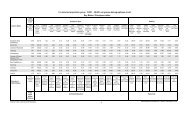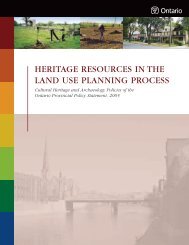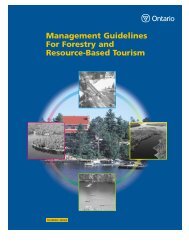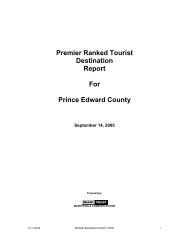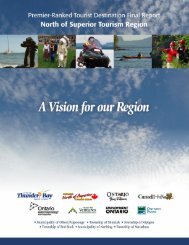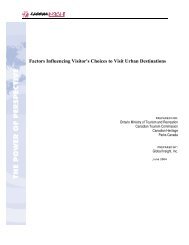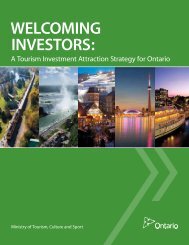Cultural Heritage Resources - Ministry of Tourism
Cultural Heritage Resources - Ministry of Tourism
Cultural Heritage Resources - Ministry of Tourism
Create successful ePaper yourself
Turn your PDF publications into a flip-book with our unique Google optimized e-Paper software.
2.2: InvestigationThis section provides guidance on how to conduct an investigation, including historicalresearch and visual inspection.There are five steps involved in undertaking a siteinvestigation:1. Identify the study area.2. Consult with municipal staff, Aboriginalcommunities, heritage organizations and thepublic to learn more about the cultural heritage<strong>of</strong> the community.3. Apply preliminary criteria to screen for knownand potential heritage resources and createan inventory.4. Analyze inventoried resources through a sitevisit.5. Investigate inventoried resources throughfurther historical and archival research,historical maps, municipal records andinterviews.1) The Study Area:For the purposes <strong>of</strong> the heritage assessment,considering a larger study area is a recommendedbest practice. The study area may be defined asthe geographic area that may be altered orimpacted because <strong>of</strong> the proposed project.The nature <strong>of</strong> the existing terrain, land elevations,vegetation, waterways, roadways, rail corridors,protected properties and known heritageresources, along with any other relevantenvironmental factors should be considered whendefining the study area. The study area andproject location should be clearly depicted on amap that is included in the final report.2) Community Input:Under O. Reg. 359/09, the applicant is required toconsult with the public, municipalities, andAboriginal communities regarding the proposedproject. The person conducting the heritageassessment should make their best efforts toensure that any heritage concerns brought forwardduring early public meetings and through anyengagement with Aboriginal communities areincorporated into the heritage assessment.Proactive engagement with community memberscan save the proponent from having to makecostly alterations to project layouts if a heritageconcern is brought forward at the final publicmeeting, or after the application is submitted toMOE.<strong>Heritage</strong> and archaeological sites are <strong>of</strong> criticalimportance to First Nations, Métis and Inuitcommunities. Aboriginal communities may haveinformation about heritage sites that are <strong>of</strong> specialimportance to their community and should beinvolved in the assessment process. Informationabout cultural heritage resources should berequested during the formal Aboriginalengagement process. Please note that traditionalknowledge may be considered sensitive. Forfurther information on engaging Aboriginalcommunities please see MTCS’ Draft TechnicalBulletin: Engaging Aboriginal Communities inArchaeology. Although this document refersspecifically to archaeology, it provides generalbackground material on effective approaches toengaging with Aboriginal communities overall.Municipal staff will be a helpful resourcethroughout the identification and evaluationprocesses. If the municipality has a municipalheritage planner and/or a Municipal <strong>Heritage</strong>Committee (MHC), they should be contacted whenconducting the heritage assessment. The localcommunity may also have a historical society,heritage museum, Architectural Conservancy <strong>of</strong>Ontario (ACO) local chapter, or other localheritage interest groups that may be consulted.Information can also be gathered from localheritage groups, librarians, museum curators andhistorians, as well as published local histories.These sources will help to establish thecommunity context and identify historical themesthat can be used in screening for potential heritageresources. Community members may also directthe qualified person to important heritageresources that are not easily identifiable througharchival sources or site visits.The objective <strong>of</strong> consulting with interestedindividuals and groups is to identify all potentialand known cultural heritage resources that may beaffected by the proposed development. Engaginginterested parties early in the heritage assessmentprocess can help to ensure that review is not


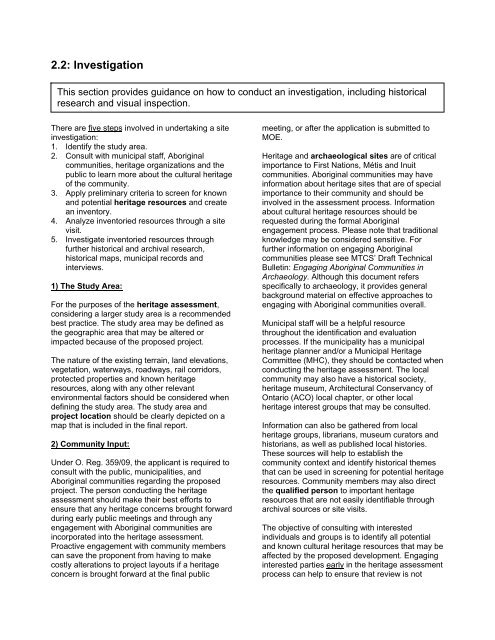
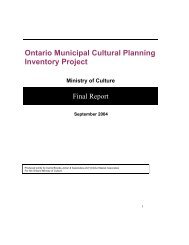
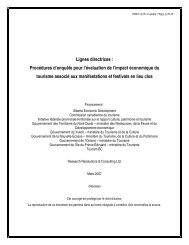
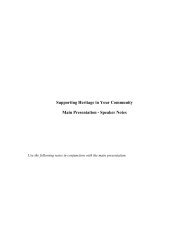
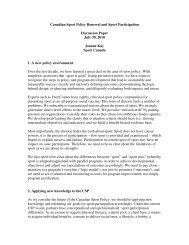
![THIS AGREEMENT made this [date], between [name of owner] (the ...](https://img.yumpu.com/49827605/1/158x260/this-agreement-made-this-date-between-name-of-owner-the-.jpg?quality=85)

